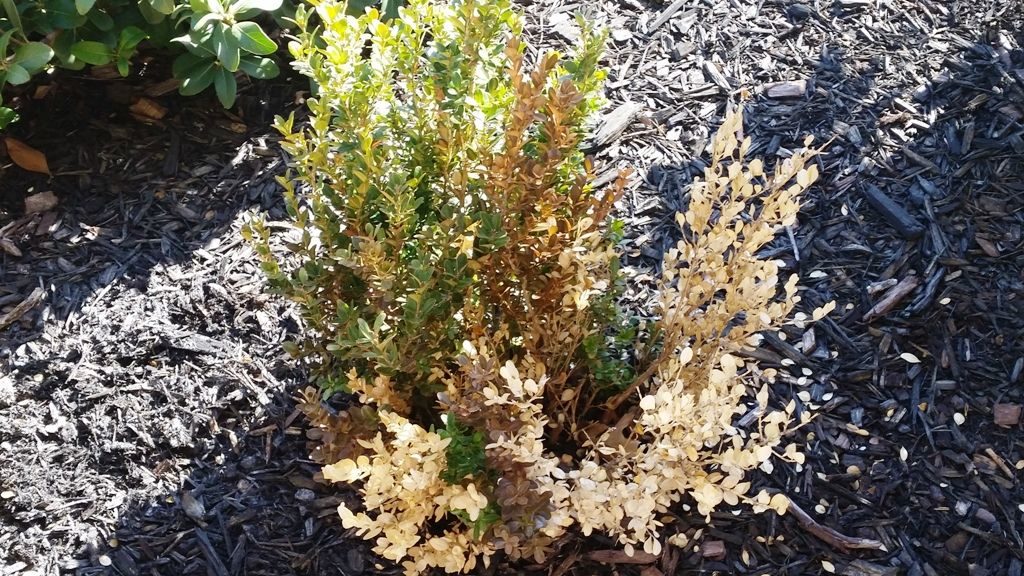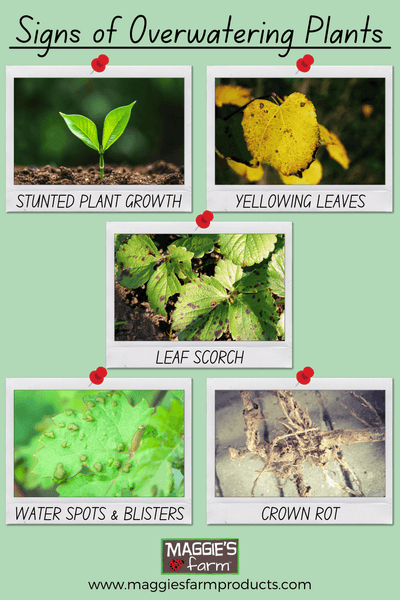As an Amazon Associate, I earn from qualifying purchases.
Overwatered outdoor plants often exhibit yellowing leaves and wilting despite moist soil. Root rot and mold growth are also common signs.
Proper plant care ensures lush, thriving gardens. Overwatering, however, can lead to serious issues. Recognizing the signs helps prevent damage. Yellow leaves, wilting, and root rot indicate overwatering. Mold on soil surface is another clue. Overwatered plants struggle to absorb nutrients.
Excess moisture suffocates roots, leading to decay. Avoid these problems by monitoring soil moisture. Ensure proper drainage to maintain plant health. Regularly check for symptoms of overwatering. Adjust watering habits accordingly. Healthy plants enhance outdoor spaces, providing beauty and tranquility. Understanding overwatering signs is key to successful gardening. Implement these tips for vibrant, flourishing plants.
Visual Signs
Overwatering outdoor plants is a common issue for gardeners. To keep your plants healthy, it’s important to spot the visual signs. These signs can help you adjust your watering routine. Below are some key indicators to watch for.
Yellowing Leaves
One of the first signs of overwatering is yellowing leaves. When a plant gets too much water, its roots can’t breathe. This lack of oxygen causes leaves to turn yellow. Check the soil’s moisture level if you see yellow leaves.
Wilting Appearance
An overwatered plant may also have a wilting appearance. This might seem confusing because wilting usually means a plant needs water. But in overwatered plants, the roots are drowning. They can’t take up water properly. This leads to the plant looking wilted despite plenty of water.
| Sign | Description |
|---|---|
| Yellowing Leaves | Leaves turn yellow due to lack of oxygen in the soil. |
| Wilting Appearance | Plant looks wilted because the roots can’t take up water. |
Watch for these signs to keep your outdoor plants healthy. Adjust your watering routine if you notice these issues.

Credit: www.mainstreetlawncare.com
Soil Indicators
One of the most common issues with outdoor plants is overwatering. Knowing the soil indicators can help you identify this problem early. This guide will focus on how to recognize overwatering by examining the soil.
Soggy Soil
Overwatered plants often have soggy soil. Touch the soil with your fingers. If it feels wet and mushy, that’s a red flag. Healthy soil should be moist but not soaked. You can also dig a little deeper to check. If the soil is wet more than an inch down, your plant has too much water.
Fungal Growth
Fungal growth is another clear sign of overwatering. Look for white or gray patches on the soil. These patches indicate mold or mildew. Fungi thrive in wet conditions. Finding mushrooms around your plants is also a bad sign. They grow when the soil stays wet for too long.
| Soil Indicator | What to Look For |
|---|---|
| Soggy Soil | Wet, mushy soil that stays damp |
| Fungal Growth | White or gray patches, mold, mildew, or mushrooms |
By understanding these soil indicators, you can take action to save your plants from overwatering.
Root Symptoms
Identifying the root symptoms of overwatered outdoor plants is essential. These symptoms can help you save your plants before it’s too late. Knowing what to look for can make a significant difference in plant health.
Root Rot
Root rot is a common issue in overwatered plants. It occurs when roots sit in water for too long. This leads to a lack of oxygen and root decay.
The roots become soft and mushy. They often emit a foul smell. Healthy roots are firm and white. In contrast, rotting roots are brown or black.
To prevent root rot, ensure proper drainage. Avoid letting plants sit in waterlogged soil.
Discolored Roots
Discolored roots are another sign of overwatering. Healthy roots should be white. Overwatered plants often have brown or black roots.
Discolored roots indicate a lack of oxygen. This condition weakens the plant, making it more susceptible to diseases.
Check roots regularly to ensure they remain healthy. If you notice discoloration, adjust your watering practices.
| Symptom | Healthy Roots | Overwatered Roots |
|---|---|---|
| Color | White | Brown or Black |
| Texture | Firm | Soft and Mushy |
| Smell | No Odor | Foul Smell |
Remember, keeping an eye on root health can save your plants. Regular checks and proper watering are key.
Plant Health Changes
Overwatered plants show clear signs of distress. Knowing these signs helps you save your plants. Here are key changes to watch for in your plant’s health.
Stunted Growth
Healthy plants grow steadily. Overwatered plants show slow or no growth. Roots need oxygen to thrive. Too much water drowns them, causing stunted growth.
Signs of stunted growth:
- Shorter stems and leaves
- Smaller or no new leaves
- Poor flower or fruit production
If you notice these signs, check your watering routine. Adjust it to let soil dry out between watering sessions.
Leaf Drop
Leaves falling off can be alarming. Overwatered plants lose leaves due to root rot. Damaged roots can’t absorb nutrients. This leads to leaf drop.
Common signs of leaf drop:
- Yellowing leaves
- Leaves falling without turning yellow
- Wilting leaves despite moist soil
Monitor your plant’s leaves. If they drop, cut back on watering. Let the soil dry before the next watering.
Environmental Factors
Understanding the environmental factors that affect your outdoor plants is crucial. These factors can tell you if your plants are overwatered. Knowing these can help you keep your garden healthy.
Weather Conditions
Weather conditions play a big role in plant health. Heavy rainfall can cause the soil to stay wet. This can lead to overwatering. If your area has a lot of rain, your plants might be overwatered. Check the weather forecast regularly. Adjust your watering schedule accordingly.
Hot weather can also affect water levels. Plants may need more water in the heat. But be careful, overwatering can still happen. Make sure the soil dries out between waterings. This prevents root rot and other issues.
Soil Type
The type of soil in your garden impacts water retention. Sandy soil drains water quickly. Clay soil holds water longer. Knowing your soil type helps you water correctly.
Here is a simple guide:
| Soil Type | Water Retention |
|---|---|
| Sandy Soil | Drains quickly, needs frequent watering |
| Clay Soil | Holds water, careful with watering |
| Loamy Soil | Balanced, ideal for most plants |
Check your soil type to know how much water it holds. This helps you avoid overwatering your plants.
Preventive Measures
Proper care ensures your outdoor plants thrive. Overwatering is a common issue. Preventive measures can help you avoid this problem. Let’s explore some effective strategies.
Proper Watering Techniques
Correct watering keeps plants healthy. Water in the early morning. This allows moisture to reach the roots before the sun gets too hot. Use a watering can or hose with a gentle spray. This prevents soil erosion and root damage.
Check the soil moisture before watering. Insert your finger two inches into the soil. If it feels damp, wait before watering again. Overwatering can suffocate the roots.
Mulching helps retain soil moisture. Spread a layer of mulch around the base of your plants. This reduces the need for frequent watering. It also prevents weed growth.
Choosing The Right Soil
Soil choice affects water retention. Use well-draining soil for your plants. Sandy or loamy soil types work best. Avoid heavy clay soil as it holds too much water.
Soil amendments can improve drainage. Mix in organic matter like compost or peat moss. This helps soil retain nutrients while allowing excess water to drain away.
Consider using raised beds or containers. These options provide better control over soil conditions. Ensure containers have drainage holes to prevent water buildup.
| Soil Type | Water Retention |
|---|---|
| Sandy Soil | Low |
| Loamy Soil | Moderate |
| Clay Soil | High |
- Choose well-draining soil.
- Mix in organic matter.
- Use raised beds or containers.
Following these preventive measures can help you maintain healthy outdoor plants. Pay attention to watering techniques and soil choice. This will keep your plants happy and thriving.
Remedial Actions
Overwatering outdoor plants can lead to many problems. These include root rot, yellow leaves, and stunted growth. Fortunately, there are effective remedial actions you can take to save your plants.
Adjusting Watering Schedule
One of the first steps is to adjust your watering schedule. Overwatered plants need less water, not more. Use the following tips:
- Water plants only when the topsoil feels dry.
- Water early in the morning to reduce evaporation.
- Use a rain gauge to monitor natural rainfall.
These steps help ensure plants get the right amount of water.
Improving Drainage
Another essential step is improving the drainage of your plant’s soil. Poor drainage can lead to waterlogged roots. Here are some methods to improve drainage:
| Method | Description |
|---|---|
| Aerate the Soil | Use a garden fork to create small holes. |
| Add Organic Matter | Mix compost or peat moss into the soil. |
| Use Raised Beds | Elevate the planting area with soil mounds. |
Improving drainage helps to prevent root rot and other issues. Follow these methods for healthier plants.

Credit: dianfarmer.com

Credit: www.familyhandyman.com
Frequently Asked Questions
How Do You Identify Overwatered Outdoor Plants?
Overwatered plants show yellowing leaves, wilting, and root rot. Check soil moisture before watering. Consistent wet soil is harmful.
What Are Common Signs Of Overwatered Plants?
Common signs include yellow leaves, soggy soil, and root rot. Stunted growth and leaf drop are also indicators.
How Often Should Outdoor Plants Be Watered?
Watering frequency depends on the plant type and climate. Generally, water when the top inch of soil is dry.
Can Overwatering Kill Outdoor Plants?
Yes, overwatering can suffocate roots, leading to root rot and plant death. Proper drainage is essential.
Conclusion
Recognizing signs of overwatering is crucial for plant health. Watch for yellow leaves, soft stems, and mold. Adjust watering habits to ensure proper drainage. Healthy plants thrive with balanced watering. By monitoring your plants closely, you can prevent overwatering issues.
Keep your outdoor garden flourishing and vibrant.

